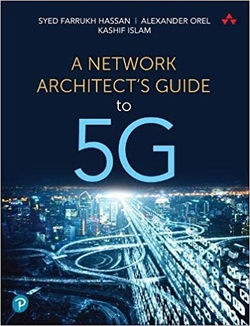معماری ترنسیور وایرلس

کتابهای زیادی در زمینه پیادهسازی فیزیکی بخش آنالوگ RF ترنسیورها مانند طراحی CMOS یا درزمینه پردازش سیگنال دیجیتال مورد نیاز در حوزه ارتباط دیجیتالی وجود دارند.
با این حال، انواع کمی از آنها صرفا به معماری ترنسیورها و طراحی سیستمها اختصاص داده شدهاند.
به طور مشابه، بسیاری از متون موجود بر مفاهیم کاربردی برای ابعاد مفید میباشند اما اطلاعات کاربردی زیادی درباره نحوه پیشروی آنها که برای یک مبتدی در آغاز کار ضروری میباشد و دلایل پیشرفت آن روش وجود ندارد. در این میان، کتاب “معماری ترنسیور وایرلس” تعادلی ایجاد کرده است و نویسنده، علت و چگونگی معماری ترنسیورها و ابعاد آنها را از دیدگاه یک معمار RFIC در درون صنعت خود، شرح میدهد.
با این حال، انواع کمی از آنها صرفا به معماری ترنسیورها و طراحی سیستمها اختصاص داده شدهاند.
به طور مشابه، بسیاری از متون موجود بر مفاهیم کاربردی برای ابعاد مفید میباشند اما اطلاعات کاربردی زیادی درباره نحوه پیشروی آنها که برای یک مبتدی در آغاز کار ضروری میباشد و دلایل پیشرفت آن روش وجود ندارد. در این میان، کتاب “معماری ترنسیور وایرلس” تعادلی ایجاد کرده است و نویسنده، علت و چگونگی معماری ترنسیورها و ابعاد آنها را از دیدگاه یک معمار RFIC در درون صنعت خود، شرح میدهد.
سال انتشار: 2014 | 752 صفحه | حجم فایل: 6 مگابایت | زبان: انگلیسی
Wireless Transceiver Architecture: Bridging RF and Digital Communications
نویسنده
Pierre Baudin
ناشر
Wiley
ISBN10:
111887482X
ISBN13:
9781118874820
قیمت: 16000 تومان
برچسبها: وایرلس
A fully comprehensive reference combining digital communications and RFIC (Radio Frequency Integrated Circuits) in one complete volume
There are many books which focus on the physical implementation of the RF/analog part of transceivers, such as the CMOS design, or the signal processing involved in digital communications. However, there islittle material dedicated to transceiver architecture and system design. Similarly, much of the existing literature looks at concepts useful for dimensioning, yet offers little practical information on how to proceed for dimensioning a line-up from scratch, and on the reasons for proceeding that way. This book redresses the balance by explaining the architecture of transceivers and their dimensioning from the perspective of a RFIC architect from within industry. It bridges the gap between digital communication systems and radiofrequency integrated circuit design, covering wireless transceiver architecture and system design from both system level and circuit designer aspects.
• Covers digital communication theory, electromagnetism theory and wireless networks organization, from theories to implementation, for deriving the minimum set of constraints to be fulfilled by transceivers
• Details the limitations in the physical implementation of transceivers to be considered for their dimensioning, in terms of noise, nonlinearity, and RF impairments
• Presents transceiver architecture and system design in terms of transceivers budgets, transceivers architectures, and algorithms for transceivers










































